In the biggest little town on the island of Islay lies one of the most respected distilleries in all of Scotland: Bowmore. My father loves their product and so do many others around the world: some of the rarest and most expensive whiskies have come from Bowmore (the accent is on the second syllable). For example, Bowmore Black and Bowmore White consistently sell for north of £200/dram in the rare bar that carries them. This is all to say that Bowmore is sought after and prized by those who enjoy whisky. While Islay is known as the haunt of smoky whiskies, Bowmore strives for a balanced approach with a measured amount of peatiness.
It’s a blustery day as I speed across the bleak peat bogs north of Port Ellen to Bowmore. Rain lashes down as I park my car near the harbor, bolt around the corner, and up the driveway to Bowmore Distillery. A typical Islay day. I pause for a moment to soak in my presence in yet another famous institution of higher drinking. Eddie MacAffer, Bowmore’s distillery manager, kindly took time out of his busy day to meet me and show me how Bowmore’s spirit is made. Eddie’s been with Bowmore since 1966 (Bowmore’s been with Islay since 1779), and I’m starting to see that the people are just as important as the equipment as far as producing a consistent character in a distillery’s whisky.
We pop into their floor maltings, an operation I witnessed the day before at Laphroaig but which is actually incredibly rare in Scottish distilleries. I dig my hand into the inches of Optic barley covering the floor and feel the heat of germination. Bowmore uses 30 tons of their own malted barley each week in their distillation; the other 70+ tons they need comes from the Port Ellen Maltings to the south. The barley is turned 24 hours per day by three men on eight-hour shifts.
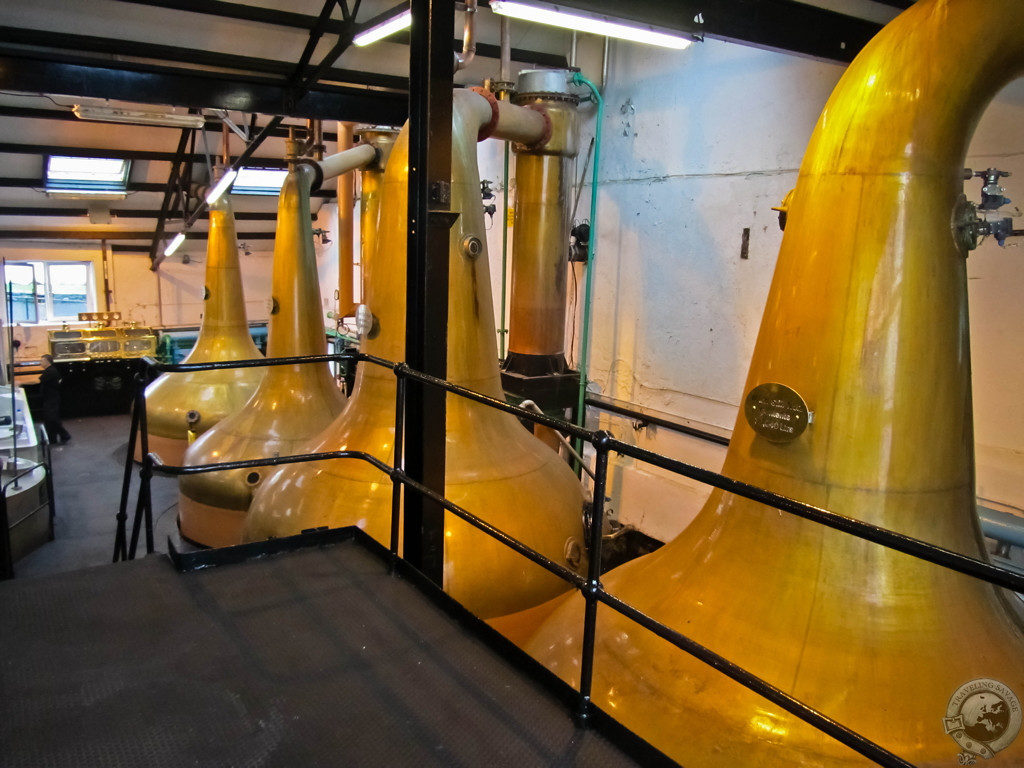
In the mash house, Eddie points out a couple of ancient copper hot liquor tanks. They hold the hot water used to pull the sugars out of the barley during mashing, and most distilleries use nondescript – even ugly – squat steel boxes. It’s an attractive addition to the mash house and complements the massive copper-topped lauter tun. We proceed up a set of stairs to a kind of attic filled with six Oregon pine washbacks. Here, the wort from the mash tun ferments for 48 hours into a beery liquor while the sea air blows through an open window. On a clear day, Eddie tells me, you can see the Paps of Jura.
The stillhouse is much smaller than I anticipated for a whisky with such reach in the States. Two wash stills and two spirit stills chug away and churn out close to two million bottles of Bowmore each year. The spirit stills are tall and straight with inclined necks so the impurities inherent in the liquor fall back into the distillate. This results in a very pure and highly palatable newmake spirit (more on this soon). In the finished product it also manifests as a cleaner, more delicate body.
Eddie leads me out into the rain and we pass their filling area. A man holding what looks like a gasoline hose fills up the barrel with a splash of overflow and hammers in a bung before another worker rolls the weighty cask outside for storage. I’ve never seen cask filling in action before, and I have to step outside for my photos because the air is thick with alcohol vapors, ripe for a spark.
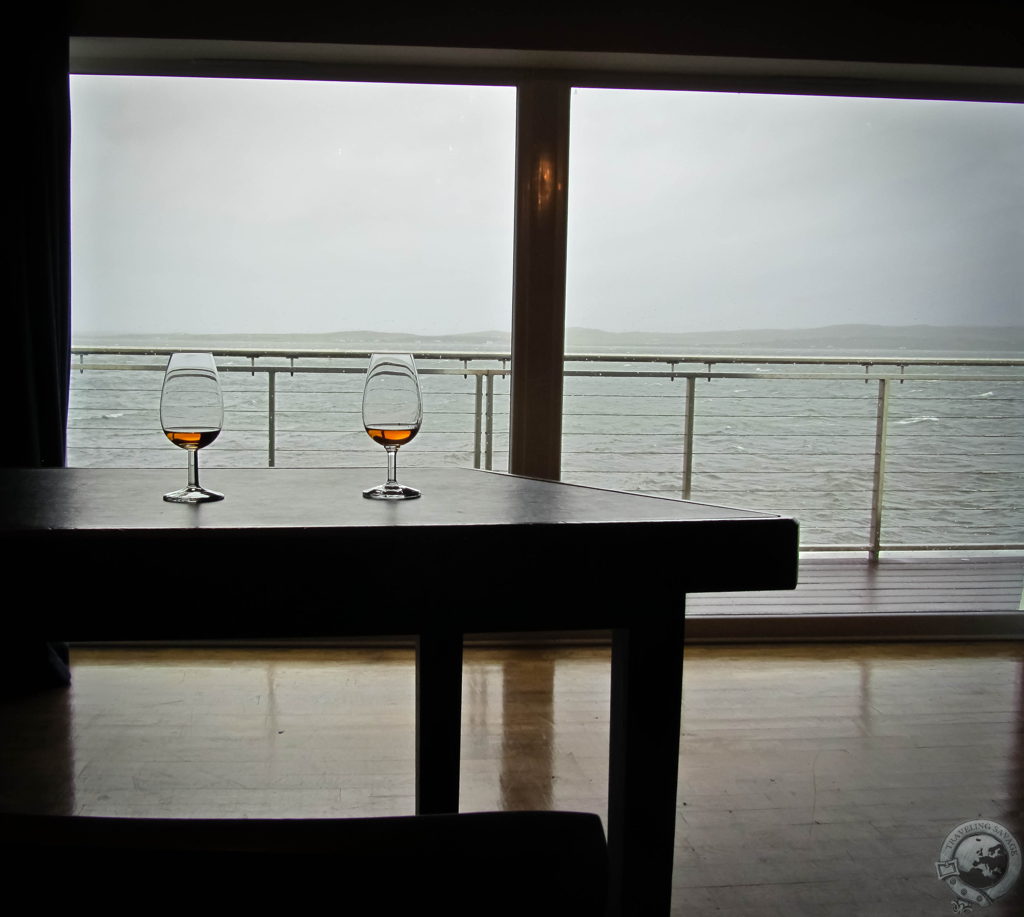
We stop at the vaunted No. 1 Vaults – the oldest maturation warehouse in Scotland. Inside, a guide is explaining the process of maturation in front of a barred barrier. Eddie opens about four huge locks and leads me past the barrier. Yes, I’m lucky. Surrounding me is the whisky equivalent of Fort Knox. Fully 80% of the whisky spends time in the highest quality American Oak ex-Bourbon barrels while the other 20% sleeps in European Oak ex-Oloroso Sherry casks. Eddie hands me a dram of their newmake spirit. It smells sweet with a hint of butterscotch. The flavor is malty, a bit peaty, with that same butterscotch element; it’s not acrid, punchy, or reminiscent of burnt rubber (like some newmakes I’ve had). In fact, Bowmore could easily bottle and sell this.
Eddie uses a wild-looking mallet to unbung a cask resting on the floor. He siphons out a dram of 12 year old whisky straight from an ex-Bourbon cask at 55% ABV. This is whisky in its most elemental state – it hasn’t been chill-filtered or adulterated in any way. And it blows my mind. The nose is huge and complex with all the markers of a good Bourbon-aged Scotch: honey, vanilla, tropical fruits like pineapple. There’s a zesty, lemony freshness on the palate that’s in no way harsh. Malty sweetness simmers beneath these highlights.
For a counterpoint, Eddie unbungs another whisky that has spent 16 years in an Oloroso Sherry cask. In the glass it’s a dark amber with thick, oily legs. Dried fruits and spices spark in the nose, and these same flavors are shot through with creamy toffee and coffee flavors on the palate. This is a smooth, silky dram with great mouthfeel. Both drams seem to carry on forever and I want more. Much more.
I don’t want to leave the vaults. Alas, my fate is not to wind up as a whisky-soaked skeleton amid the barrels of Bowmore. On the way back to the visitor center, we pop into the kiln where they convert the hot water into hot air used to dry the malted barley. A peat fire burns off to one side that imparts the 25 ppm of phenols into the malt and gives it the slightly smoky character.
In the beautiful tasting room overlooking Loch Indaal, Eddie pours me a trio of drams: 15 Year Old Darkest, 17 Year Old, and 21 Year Old Port Cask-Matured. I’m a bit embarrassed to admit I did not take tasting notes on these fine drams, I simply enjoyed them while I played back a brilliant visit to one of Scotland’s most brilliant distilleries. Thanks Eddie.
Disclosure: I arranged a visit with Eddie MacAffer but all tastes of Bowmore whisky were complementary. All thoughts and opinions expressed here are my own.

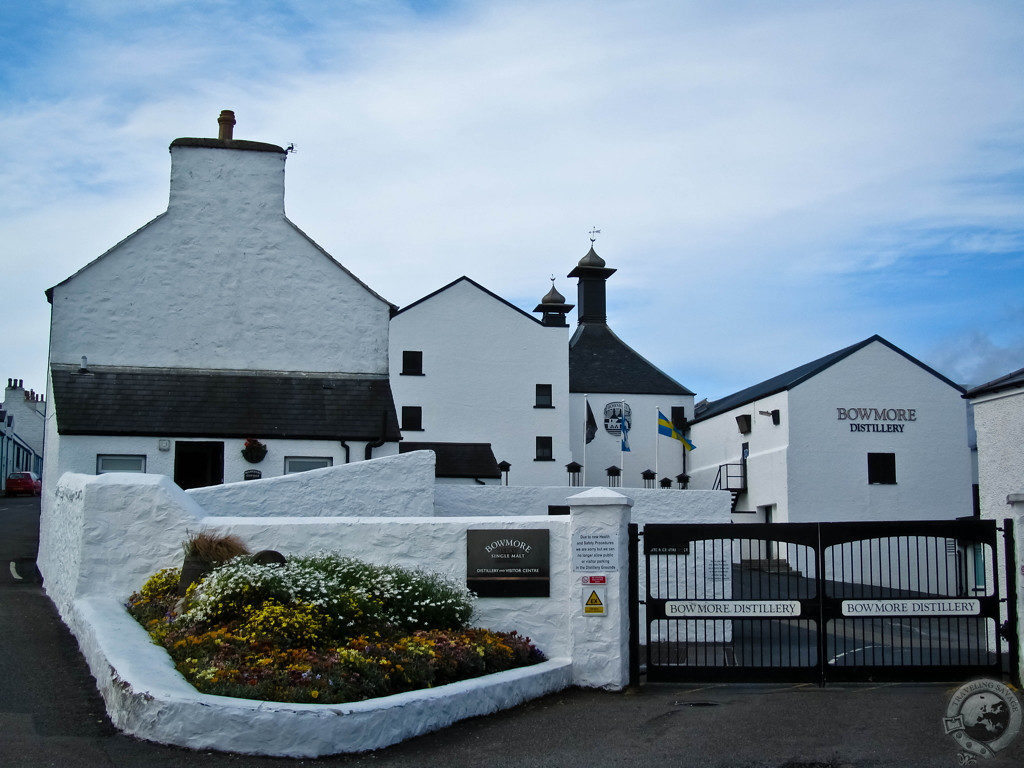
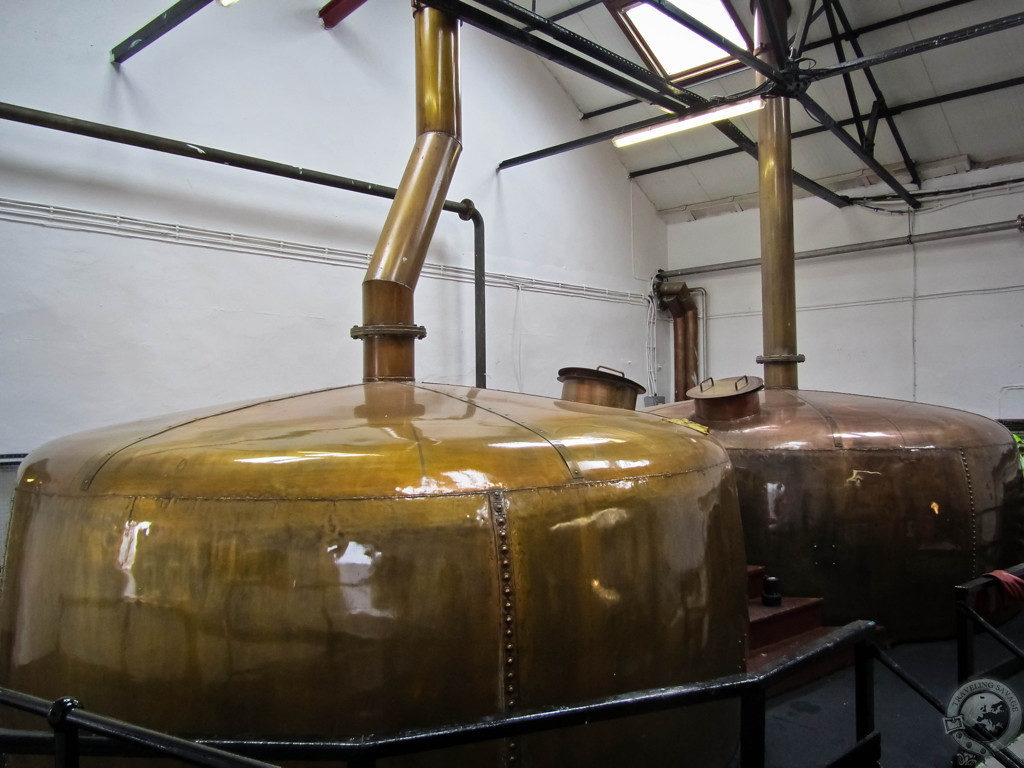
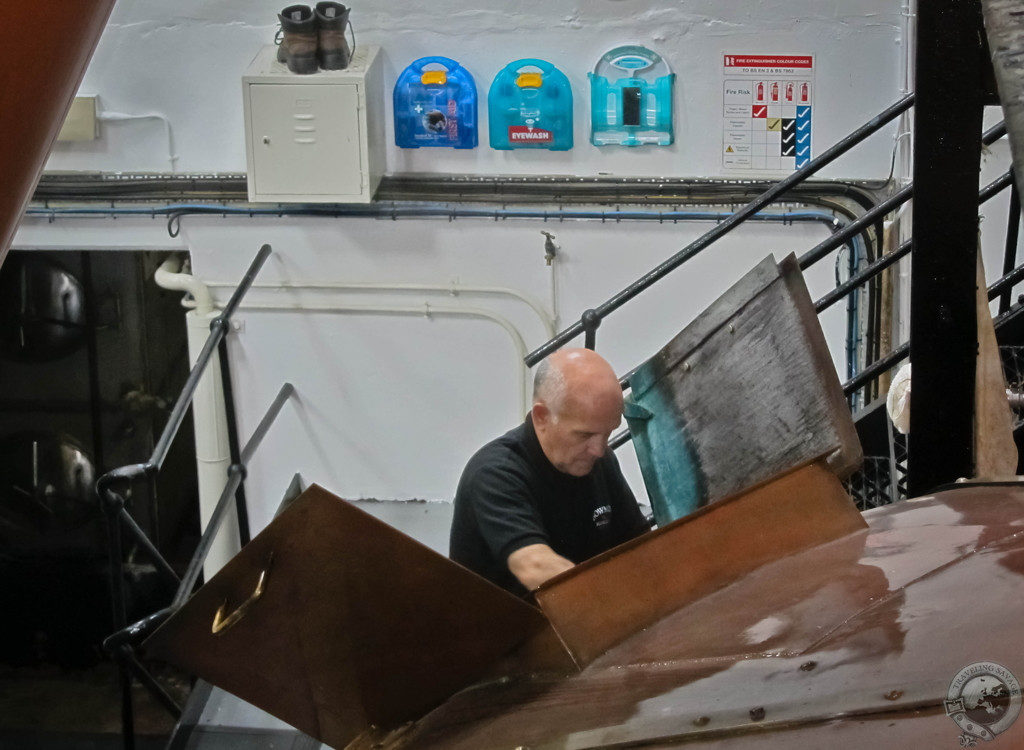
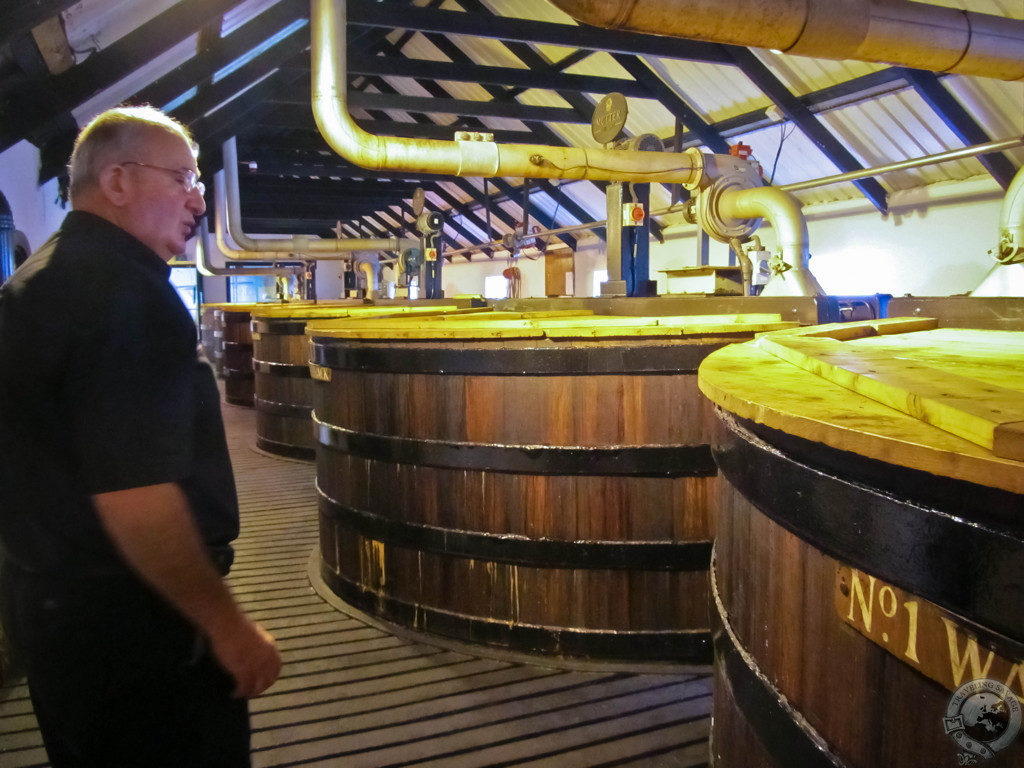
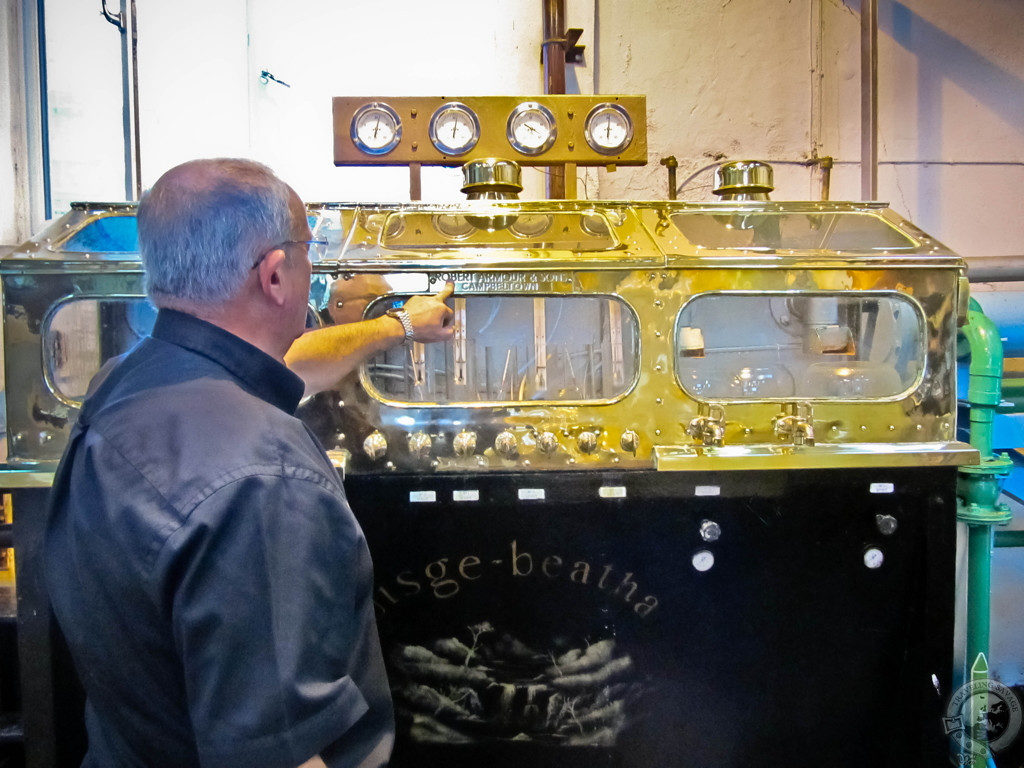
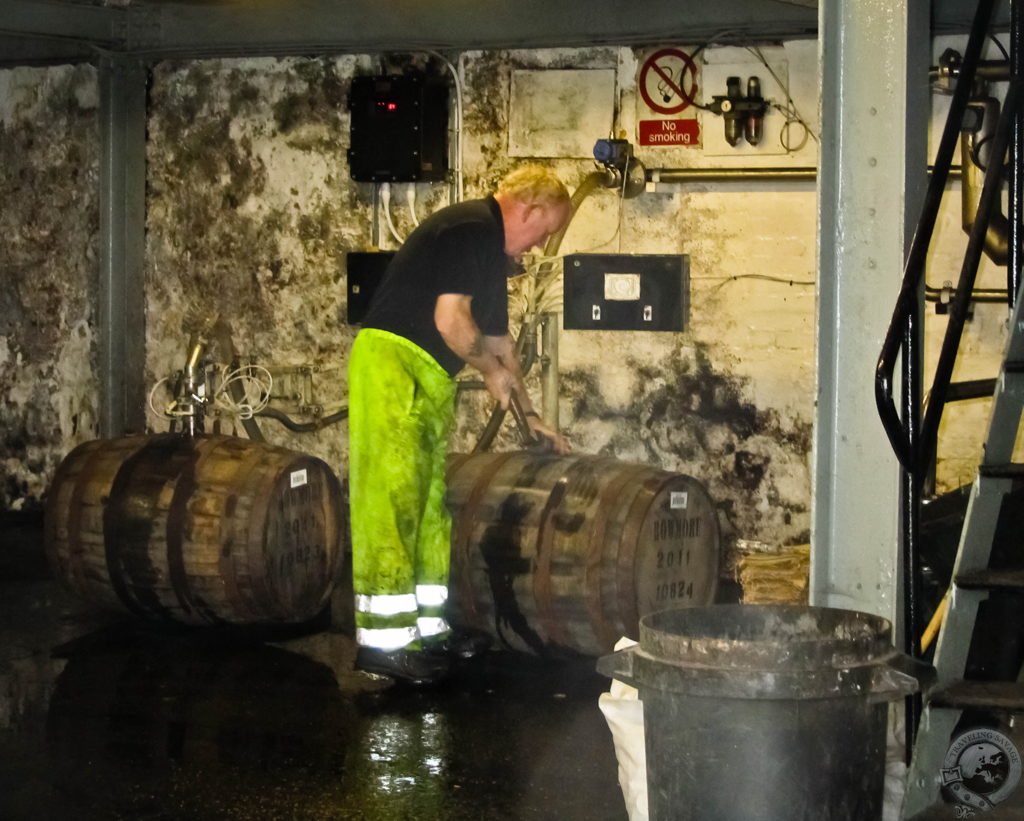
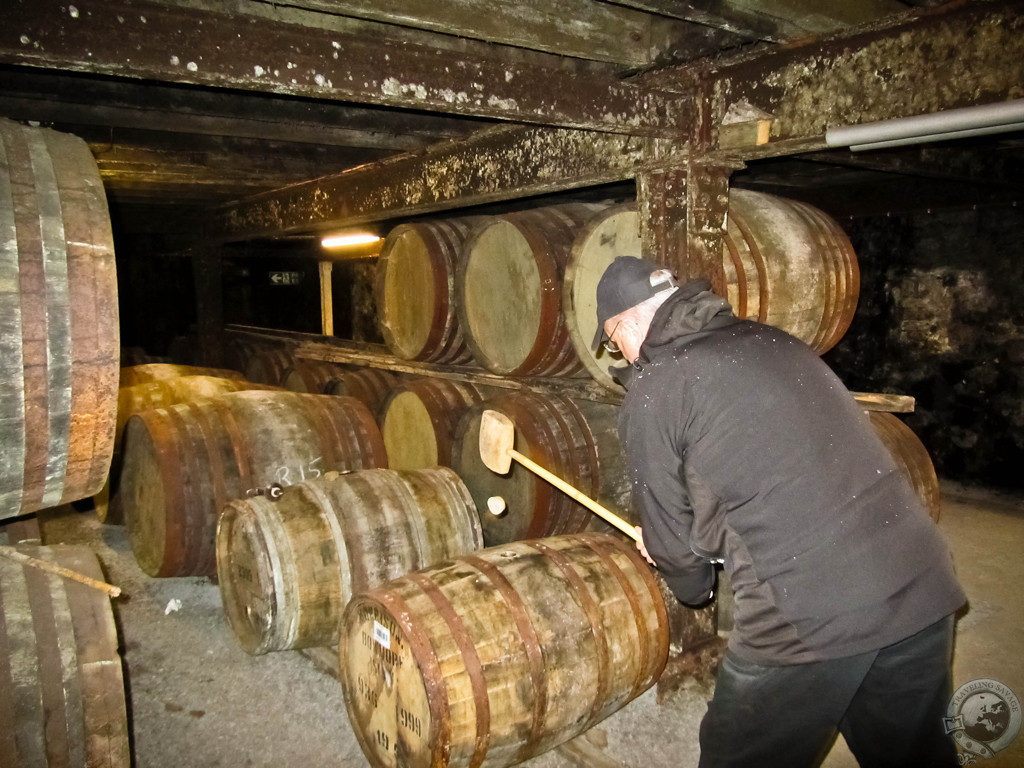
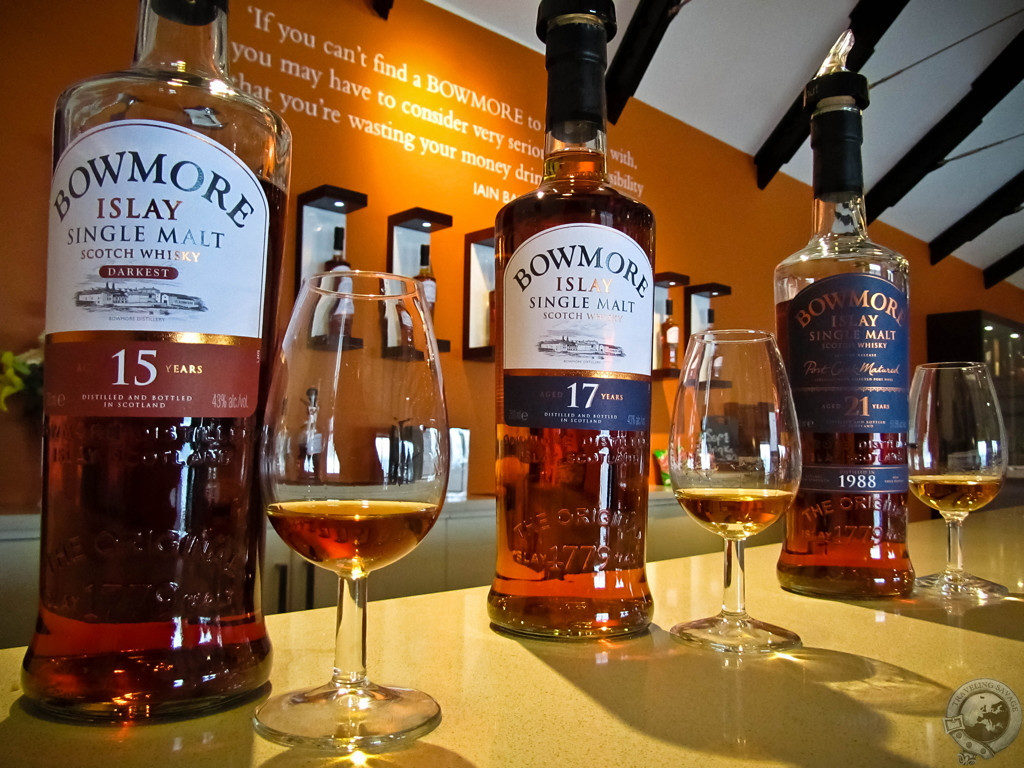
wow. so how do you go back to drinking regular old bottled whisky?
A short memory helps. My purchasing habits have changed after experiences like these, though. I tend to seek out cask strength, single cask, non-chill-filtered whiskies.
Who would have time for tasting notes, you had the greatest time,right? Bowmore looks like a great place!
It was fantastic. And to think I completed the second half of this day by visiting Bruichladdich. It was probably the greatest day of whisky experiences in my life.
O, Lord, grant me a trip to Islay before I’m auld eneuch ta dee. Keith’s tasting has to be understood as a special one off event like going to heaven without dying.
How about next year? Islay and Speyside?
Sounds great to me. Let’s talk next time we get together.